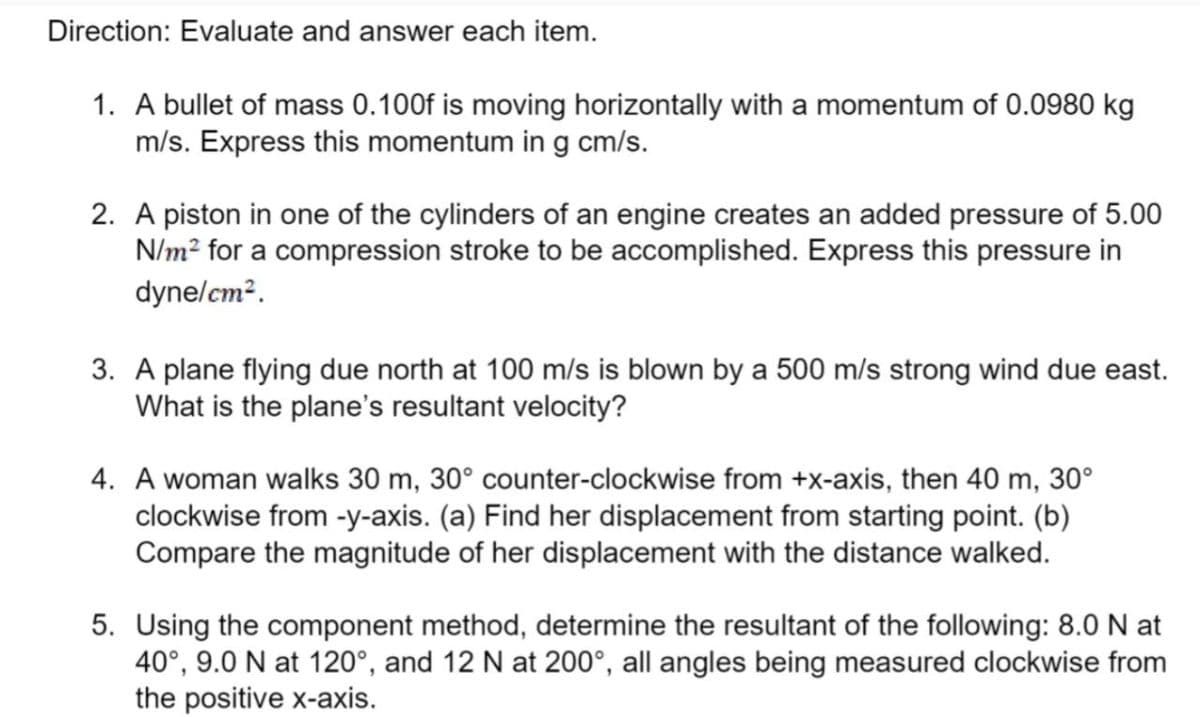2. A piston in one of the cylinders of an engine creates an added pressure of 5.00 N/m² for a compression stroke to be accomplished. Express this pressure in dyne/cm2.
2. A piston in one of the cylinders of an engine creates an added pressure of 5.00 N/m² for a compression stroke to be accomplished. Express this pressure in dyne/cm2.
College Physics
1st Edition
ISBN:9781938168000
Author:Paul Peter Urone, Roger Hinrichs
Publisher:Paul Peter Urone, Roger Hinrichs
Chapter11: Fluid Statics
Section: Chapter Questions
Problem 50PE: Scurrilous con artists have been known to represent gold-plated tungsten ingots as pure gold and...
Related questions
Question
Answer number 2 to 5 pls. I don't want to waste my money here.

Transcribed Image Text:Direction: Evaluate and answer each item.
1. A bullet of mass 0.100f is moving horizontally with a momentum of 0.0980 kg
m/s. Express this momentum in g cm/s.
2. A piston in one of the cylinders of an engine creates an added pressure of 5.00
N/m² for a compression stroke to be accomplished. Express this pressure in
dyne/cm².
3. A plane flying due north at 100 m/s is blown by a 500 m/s strong wind due east.
What is the plane's resultant velocity?
4. A woman walks 30 m, 30° counter-clockwise from +x-axis, then 40 m, 30°
clockwise from -y-axis. (a) Find her displacement from starting point. (b)
Compare the magnitude of her displacement with the distance walked.
5. Using the component method, determine the resultant of the following: 8.0 N at
40°, 9.0 N at 120°, and 12 N at 200°, all angles being measured clockwise from
the positive x-axis.
Expert Solution
This question has been solved!
Explore an expertly crafted, step-by-step solution for a thorough understanding of key concepts.
Step by step
Solved in 2 steps with 2 images

Knowledge Booster
Learn more about
Need a deep-dive on the concept behind this application? Look no further. Learn more about this topic, physics and related others by exploring similar questions and additional content below.Recommended textbooks for you

College Physics
Physics
ISBN:
9781938168000
Author:
Paul Peter Urone, Roger Hinrichs
Publisher:
OpenStax College

College Physics
Physics
ISBN:
9781938168000
Author:
Paul Peter Urone, Roger Hinrichs
Publisher:
OpenStax College